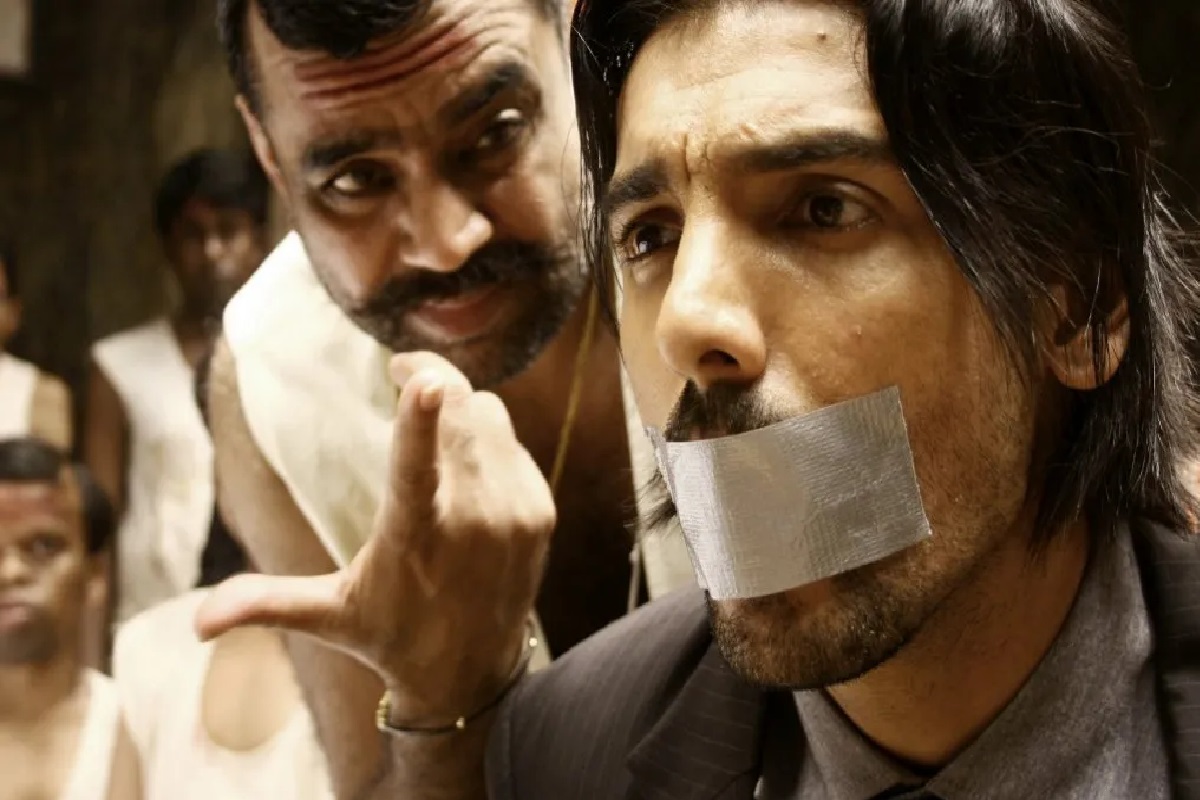Anurag Kashyap’s film ‘No Smoking’ defies easy categorization
- Update Time : Friday, May 24, 2024

Anurag Kashyap’s direction is both the film’s strength and its potential drawback. His penchant for non-linear storytelling and visual symbolism is on full display here. The film is replete with surreal sequences and metaphorical imagery that challenge the audience’s perceptions and expectations. Writes Md Lalin Azad Nirupam
‘No Smoking’, directed by Anurag Kashyap and released in 2007, is a psychological thriller that delves into the labyrinthine world of addiction and personal freedom. The film stars John Abraham as K, a wealthy chain smoker who embarks on a bizarre and surreal journey to quit smoking after his wife Anjali (Ayesha Takia) threatens to leave him.
So, the first scene illustrated the nature of our antagonist hero and the society as well. The Society we live in and the ever-ending drama of good and bad. The screenplay writer puts his first impression on the first scene and takes these impressions to the last.
The narrative begins conventionally enough but quickly descends into an almost Kafkaesque nightmare. K, reluctantly checking into a rehabilitation center run by the enigmatic Baba Bengali (Paresh Rawal), is subjected to a series of extreme and increasingly absurd treatments designed to break his addiction. What starts as a straightforward attempt to quit smoking morphs into a twisted game of control and submission?
John Abraham delivers a commendable performance, portraying K’s arrogance and vulnerability with equal finesse. His journey from skepticism to desperation is palpable and engaging. Paresh Rawal, as the sinister Baba Bengali, is chillingly effective. His calm demeanor juxtaposed with the horrific methods he employs adds a layer of psychological horror to the film.
One of the main fundamentals of a secret society is, it has Update practice of everything. And the society itself has the capability of maintaining a strong interpersonal Network and carrying out the task as their life at risk if anyone fails to do so. We will see the same scenario in the movie as well.
So, our protagonist hero joins one of this Secret society to quit smoking as his wife answered Against the question that “k” asked what you have love to have on her next birthday. She replied “divorce “. Here is the maestro of Anurag Kashyap. He can put comedy on any serious scene as well, like Ernest Hemingway did in his early novel.
Anurag Kashyap’s direction is both the film’s strength and its potential drawback. His penchant for non-linear storytelling and visual symbolism is on full display here. The film is replete with surreal sequences and metaphorical imagery that challenge the audience’s perceptions and expectations. However, this approach also makes “No Smoking” a demanding watch, requiring viewers to engage actively with the narrative rather than passively consuming it.
The cinematography by Rajeev Ravi is a standout element, capturing the stark contrasts between K’s opulent life and the grim, claustrophobic atmosphere of the rehabilitation center. The use of lighting and color further accentuates the film’s unsettling tone. The soundtrack, composed by Vishal Bhardwaj, complements the narrative’s dark and surreal nature, enhancing the overall atmosphere.
Despite its artistic merits, “No Smoking” was met with mixed reactions upon its release. Many critics and viewers found its abstract narrative and unconventional structure perplexing and alienating. However, it has since garnered a cult following, appreciated for its bold experimentation and depth.
The redemption process has three different stages. If anyone fails to quit the bad habit on the first three, he has to go through the 4th which is spiritual in nature. I have the full explanation of it but I guess every viewer first watches this masterpiece, then they will have some thought provoking triggers as well.
In conclusion, “No Smoking” is a film that defies easy categorization. It is a bold, avant-garde piece of cinema that explores the themes of addiction, control, and personal freedom in a unique and thought-provoking manner. While it may not appeal to everyone, those willing to engage with its complex narrative will find a richly layered and intellectually stimulating experience.
















